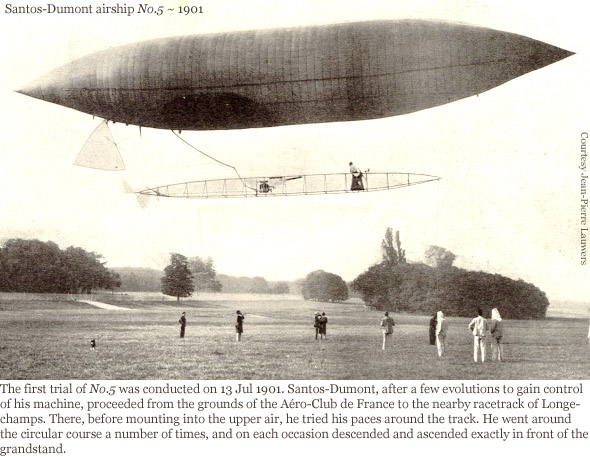
 SOLD
SOLD
Anonymous:
The Santos Dumont Air-Ship, circa 1900
Mounted (ref: 5849)
Inscribed with title
Gouache on board
8 1/2 x 6 3/4 in. (21.5 x 17.2 cm)
Tags: Anonymous gouache panel
Provenance: B. Ingram, 1965.
Alberto Santos-Dumont (1873 – 1932) was a Franco-Brazilian aviation pioneer. The heir of a wealthy family of coffee producers, Santos Dumont dedicated himself to aeronautical study and experimentation in Paris, France, where he spent most of his adult life. Santos-Dumont designed, built, and flew the first practical dirigible, demonstrating that routine, controlled flight was possible. This "conquest of the air", in particular his winning the Deutsch de la Meurthe prize on 19 October 1901 on a flight that rounded the Eiffel Tower made him one of the most famous people in the world during the early 20th century.
Santos-Dumont described himself as the first "sportsman of the air." He started flying by hiring an experienced balloon pilot and took his first balloon rides as a passenger. In 1898, Santos-Dumont flew his first balloon design, the Brésil. After numerous balloon flights, Santos-Dumont turned to the design of steerable balloons, or dirigibles, that could be propelled through the air rather than drifting along with the wind. A dirigible, La France, capable of flying at around 24 km/h (15 mph) had been successfully flown in 1884 by Charles Renard and Arthur Krebs, but their experiments had not progressed due to a lack of funding. Between 1898 and 1905, Santos-Dumont built and flew 11 dirigibles. With air traffic control restrictions still decades in the future, he would float along Paris boulevards at rooftop level in one of his airships, commonly landing in front of a fashionable outdoor cafe for lunch.
The zenith of his lighter-than-air career came when Santos-Dumont won the Deutsch de la Meurthe prize. This was for the first flight from the Parc Saint Cloud to the Eiffel Tower and back in less than 30 minutes, necessitating an average ground speed of at least 22 km/h (14 mph) to cover the round trip distance of 11 km (6.8 mi) in the allotted time. On 19 October 1901, after several attempts, Santos-Dumont succeeded in making the trip in using his dirigible Number 6. Santos-Dumont was awarded the prize as well as the prize money of 125,000 francs. In a charitable gesture, Santos-Dumont donated 75,000 francs of the prize money to the poor of Paris. The balance was given to his workmen as a bonus. An additional matching 125,000 francs was voted to him along with a gold medal by the government of his native Brazil. Santos-Dumont's aviation feats made him a celebrity in Europe and throughout the world.









